15 (Surprising) Urban National Parks in the USA
This urban national parks in America post contains affiliate links. This means that whenever you buy or book something through those links, we may earn a small commission – without any extra cost to you at all! You can read more about our Terms of Use / Disclosure here.
More than 80% of Americans currently live in an urban area. Whether it’s a small town or huge metropolis, people gravitate more and more toward population clusters.
This, combined with the increasing popularity of nature getaways and outdoor activities, makes the creation and upkeep of urban national parks even more important.
There are over 400 sites in the National Park Service (NPS) system, most of which lie within easy reach from at least one major city. In fact, there are literally dozens of National Park Service units that are literally in a city, including major ones like San Francisco, New York City, Philadelphia and Washington, D.C.
So, even if you’re living in or visiting one of the largest cities in the USA, chances are you can still quite easily visit one or more urban national parks.
15 Best Urban National Parks in the U.S.
There’s much more to America’s national parks than natural icons like the Grand Canyon, Yosemite, Crater Lake or Yellowstone. Although they’re the undisputed star attractions in the system, I’d also encourage you to explore some of the less-known urban parks.
Even one of the greatest American landscape architects, Frederick Law Olmsted (famous for designing New York’s Central Park, Boston’s Emerald Necklace and the Niagara Reservation, the first state park in the country) was a huge advocate for urban national parks.
He also contributed massively to the establishment of the National Park System itself. He said about the importance of urban parks:
It is one great purpose of the Park to supply to the hundreds of thousands of tired workers, who have no opportunity to spend their summers in the country, a specimen of God’s handiwork that shall be to them, inexpensively, what a month or two in the White Mountains or the Adirondacks is, at great cost, to those in easier circumstances.
With that quote, let’s move on to an overview of the best urban national parks in America. You’ll notice, perhaps be surprised too, that some of them are home to the greatest and most famous urban landscapes and landmarks in the nation.
1. Theodore Roosevelt Birthplace National Historic Site, New York City, New York
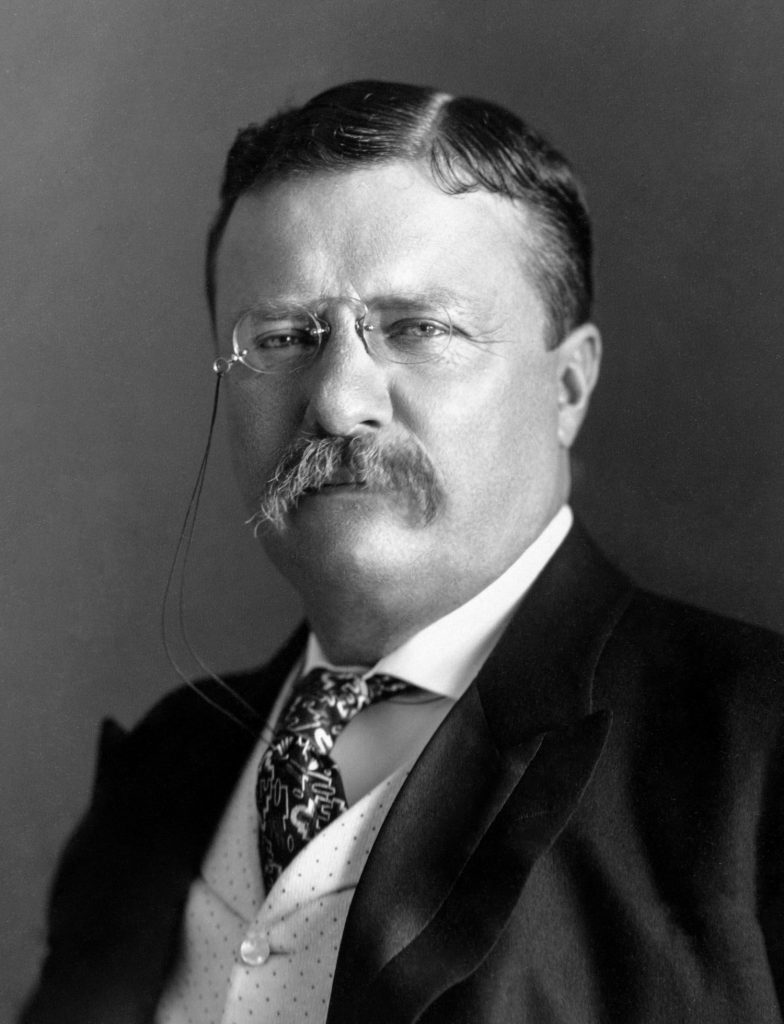
I can’t think of a more appropriate site to kick off this list of the best urban national parks in the U.S. than the boyhood home of Theodore Roosevelt. In more than one sense, he’s one of the fathers of the American national parks system.
“Teddy” was born and raised in a townhouse at 28 E. 20th Street in Manhattan’s Flatiron District. This national historic site is a replica of the actual house, which was demolished in 1916 to create retail space. After Roosevelt’s death, the site was purchased by the Women’s Roosevelt Memorial Association and the house rebuilt.
This presidential national park site is the perfect place to learn about the life and legacy of Theodore Roosevelt, the “conservationist president.”
Another great park, by the way, to learn more about his massive contributions to nature conservation is Theodore Roosevelt National Park in North Dakota.
2. Gateway National Recreation Area, New York City, New York
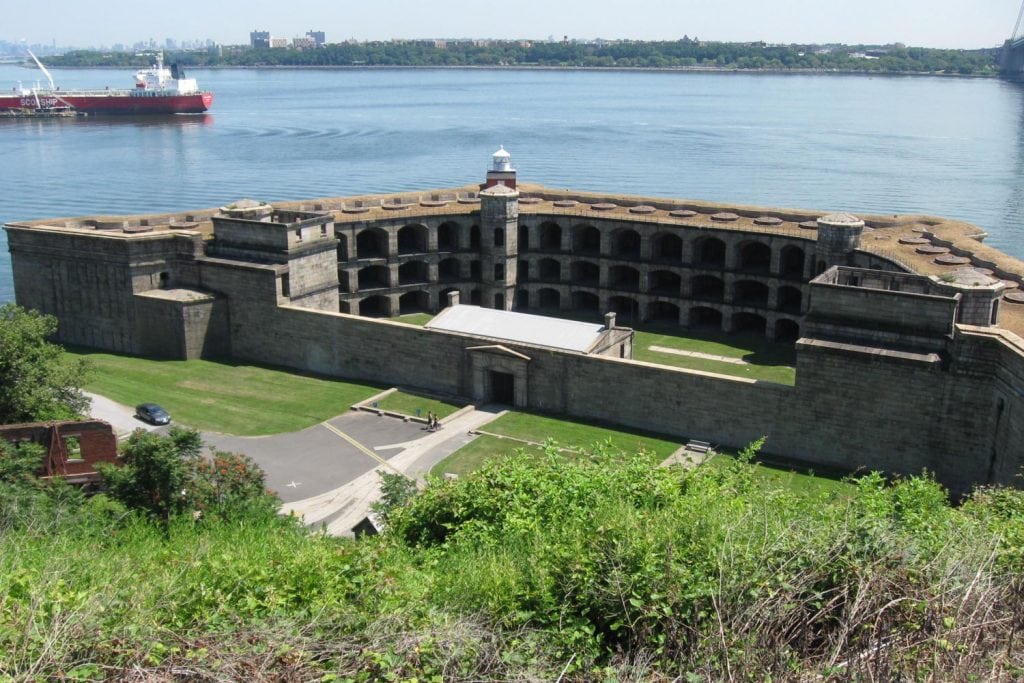
One of the least-known urban national parks in the U.S., Gateway National Recreation Area encompasses a variety of sites in both New York and New Jersey. It consists of three different geographical units: Jamaica Bay and Staten Island in New York City and Sandy Hook in New Jersey.
Created in 1972, the recreation area protects natural, cultural and historical sites in one of the world’s most urbanized and populous regions.
Its diversity is remarkable, including the Jamaica Bay Wildlife Refuge, the former Floyd Bennett Field airfield, historic Fort Wadsworth, seven beaches in Sandy Hook, and Fort Hancock, which was part of the coastal defense system in New York harbor.
Although by no means the prettiest of all urban national parks, it is definitely a fascinating place to visit. Mark Woods describes his experiences in the park wonderfully in his excellent book ‘Lassoing the Sun: A Year in America’s National Parks’.
3. Biscayne National Park, Miami, Florida

Although it’s not technically within any city limits, Biscayne National Park is still one of the most accessible national parks from a major U.S. city. It protects Biscayne Bay just south of Miami—the Miami skyline is visible from certain places in the park.
It’s one of the three national parks near Miami.
Up to 95% percent of this national park consists of water. Land areas include the shore of the bay, Elliott Key, which is the first of the Florida Keys, and a number of smaller islands. While there are some land-based attractions here, the real treat lies underwater.
Biscayne National Park protects the northernmost area of the Florida Reef, one of the world’s largest coral reefs. It’s a prime destination for snorkeling and scuba diving, which are among the top things to do in Biscayne National Park. You can see literally hundreds of fish species and other marine creatures.
It’s worth noting that this is the only national park that has an underwater trail! The Maritime Heritage Trail is a scuba diving trail that takes divers to six shipwrecks and the Fowey Rocks Lighthouse. Some of the sites are suitable for snorkeling, too. Access to the trail is by boat only.
4. Gateway Arch National Park, St. Louis, Missouri
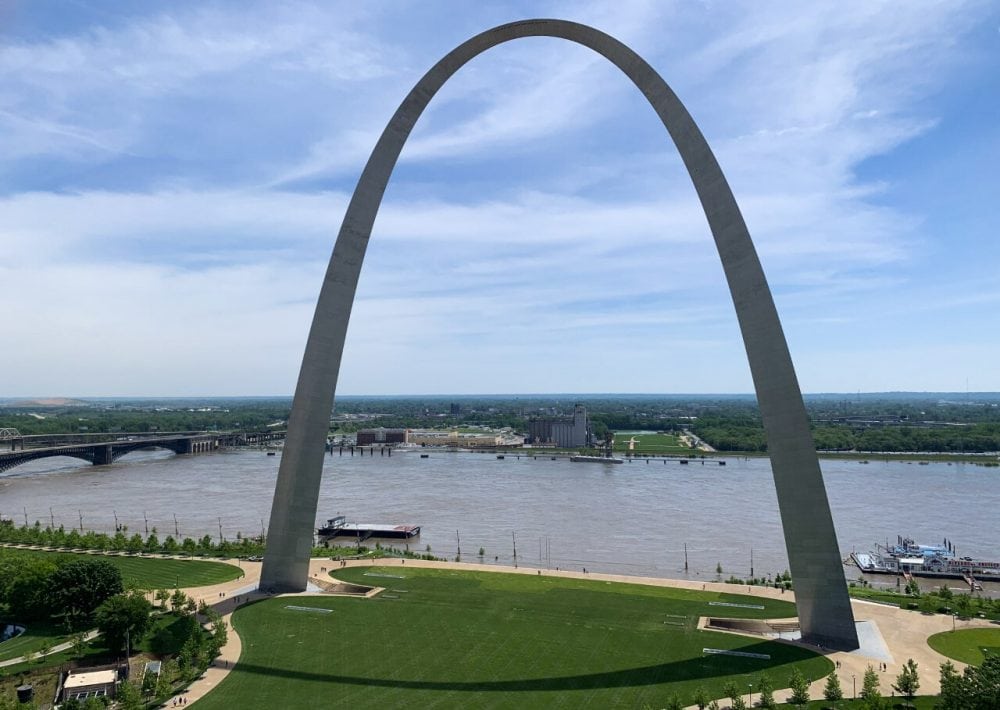
Formerly known as the Jefferson National Expansion Memorial, Gateway Arch National Park is one of the newest national parks in America, renamed in 2018. It’s located in downtown St. Louis near the spot where the Lewis and Clark Expedition departed in 1804.
It commemorates the importance of the city of St. Louis in the western expansion of the United States and is a memorial to Thomas Jefferson’s role in opening the West. Specifically, it commemorates the Louisiana Purchase, the debate of slavery in the Dred Scott case and the first civil government to the west of the Mississippi River.
Gateway Arch National Park is the smallest national park in the United States and the only one that doesn’t protect a natural area. Nonetheless, it’s a super-significant site in the story of the nation. In a sense, it’s the only true “urban national park” in the country.
5. Santa Monica Mountains National Recreation Area, Los Angeles, California
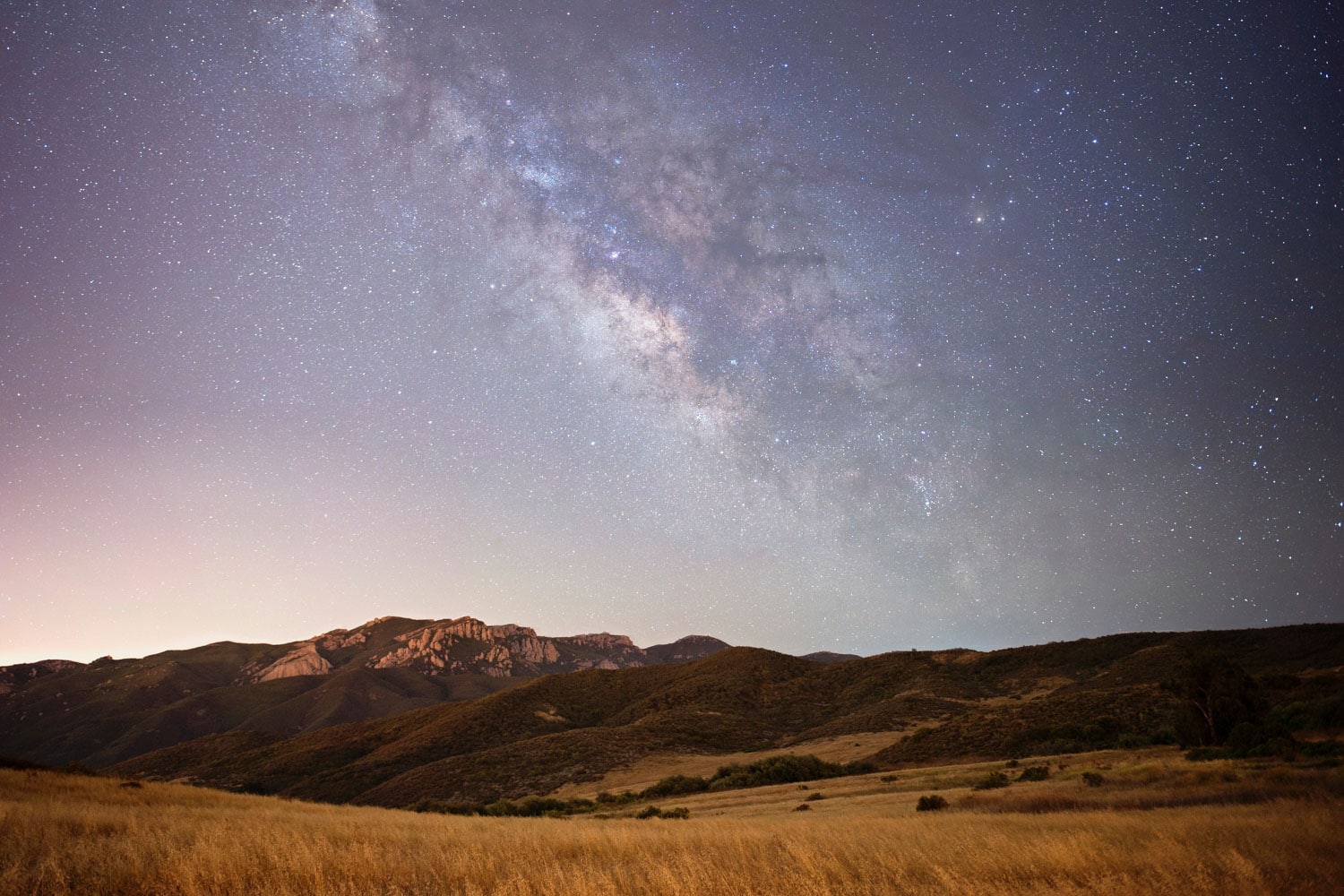
Situated in the greater Los Angeles region, the Santa Monica Mountains National Recreation Area is a popular getaway from the urban craziness of L.A. It offers numerous adventurous activities, some great wildlife viewing and is home to many historic sites.
In terms of sheer size, this is the largest of all urban national parks in America—even in the world.
It is made up of various individual parks and protected natural areas, including half a dozen California state parks. You’ll also find a handful of California state beaches, such as the world-famous beaches of Malibu, adjacent to this large recreation area.
More than 500 miles of hiking trails offer visitors the chance to explore these beautiful landscapes in greater detail.
6. Independence National Historical Park, Philadelphia, Pennsylvania
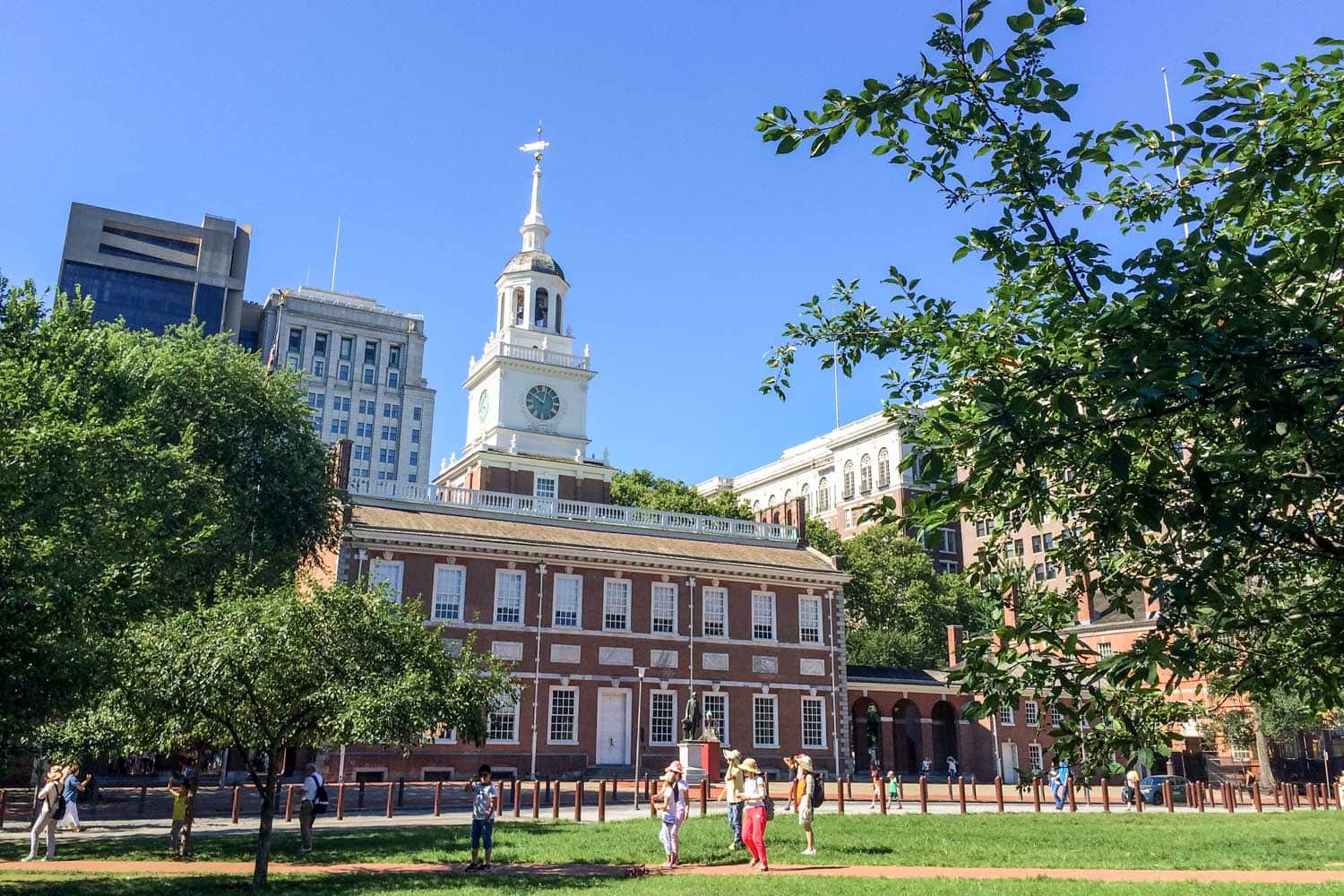
This is without question one of the most historically significant urban national parks in America. Independence National Historical Park in Philadelphia protects a number of sites related to the American Revolution. This is literally were the republic was born—the birthplace of the United States.
The park’s centerpiece and star attraction is Independence Hall, a UNESCO World Heritage Site. This is the very building where both the Declaration of Independence and the U.S. Constitution were debated and signed. Across the street, the Liberty Bell is displayed in the Liberty Bell Center, a worldwide symbol of liberty.
Other noteworthy buildings in this urban park are the First Bank of the United States and City Tavern, a favorite hangout of the politicians and revolutionaries.
7. Statue of Liberty National Monument, New York City, New York
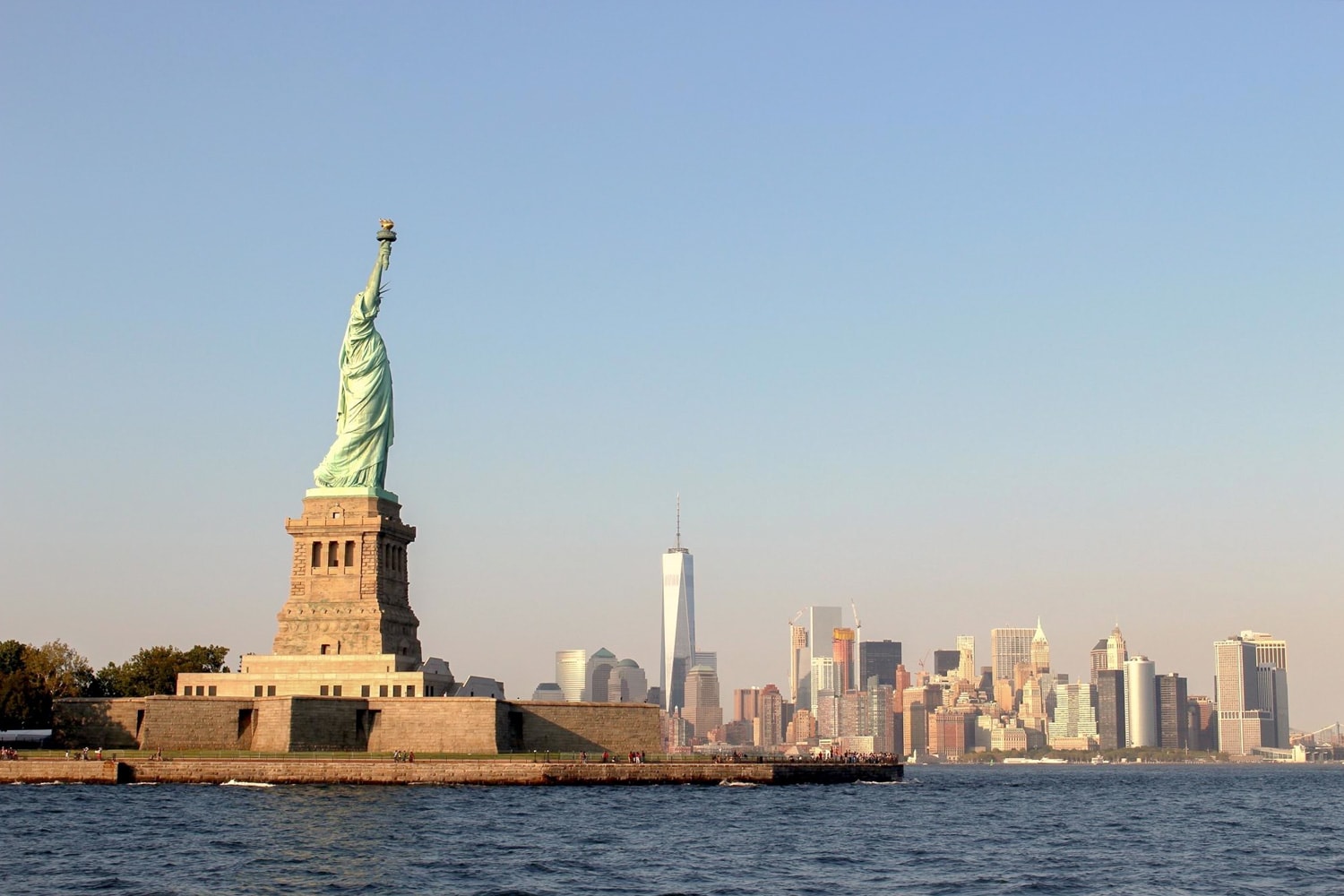
Almost everyone knows the landmark, but far fewer people also know that New York City’s Statue of Liberty is actually a National Park Service site. It’s more than fair to say that this is one of the most renowned and greatest urban national parks in America.
One of the absolute architectural icons of the United States, it was a gift from the people of France to the U.S. and is widely regarded as a universal symbol of democracy and freedom.
Officially known as ‘Liberty Enlightening the World’, the statue is one of several National Park Service units in New York City. Another place that’s absolutely worth visiting is Ellis Island, which is also a part of the Statue of Liberty National Monument.
Other fascinating sites managed by the NPS nearby include Governors Island National Monument, Thomas Edison National Historical Park in New Jersey, Federal Hall National Monument, the site where George Washington took the oath of office as first President of the United States.
The Theodore Roosevelt Birthplace National Historic Site and Gateway National Recreation Area, also within New York City, are described in more detail above.
8. San Antonio Missions National Historical Park, San Antonio, Texas
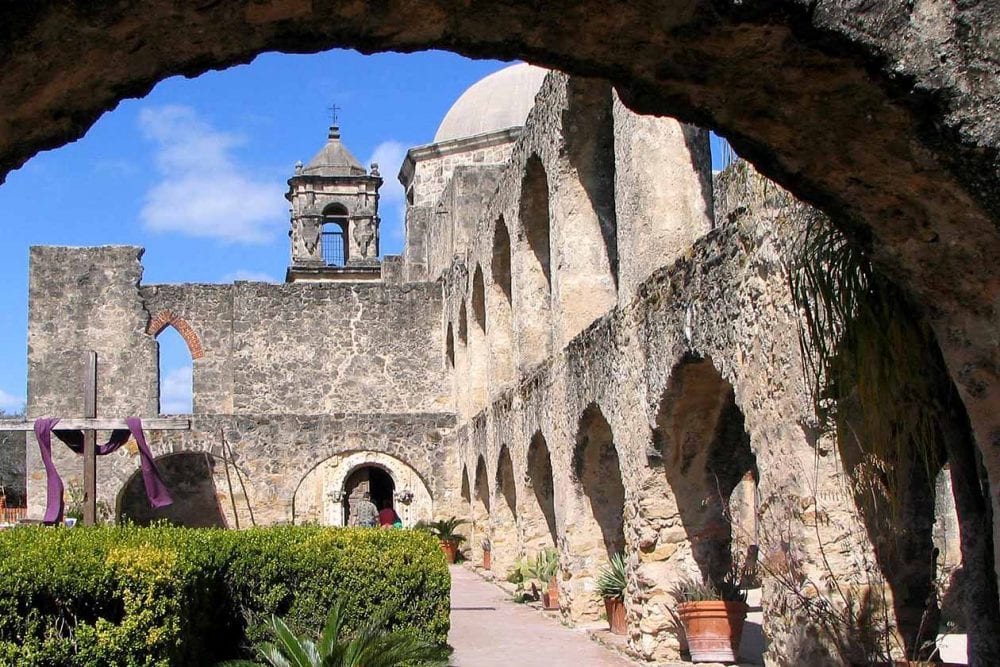
A collection of outposts in San Antonio, Texas, the San Antonio Missions were first established by Spanish Catholics with the purpose of spreading Christianity among Native Americans. Founded in the late-17th and early-18th centuries, they were part of a much larger system of colonization that extended across the Spanish Southwest.
After 10,000 years without any major foreign threats, the local population found itself under attack on various fronts in the first decades of the 1700s. Bands of Apaches carried out raids from the north, while lethal diseases spread from Mexico. On top of that, persistent drought caused a scarcity of food.
The Spanish missionaries took advantage of the situation by offering Native Americans refuge in the missions. Survival was possible by giving up their traditional lifestyle, swearing fealty to a faraway king and becoming Christian.
The four missions that make up the San Antonio Missions National Historical Park are, from north to south, Mission Concepción, Mission San Jose, Mission San Juan and Mission Espada.
Note that the fifth and most famous mission in San Antonio, the Alamo, is not part of this urban national park. Well-known for the role it played during the Texas Revolution in 1836, the Alamo lies north of Mission Concepción in downtown San Antonio, just a few minutes from the Riverwalk. Both the Alamo and the San Antonio Missions National Historical Park are part of the same UNESCO World Heritage Site.
9. Golden Gate National Recreation Area, San Francisco, California
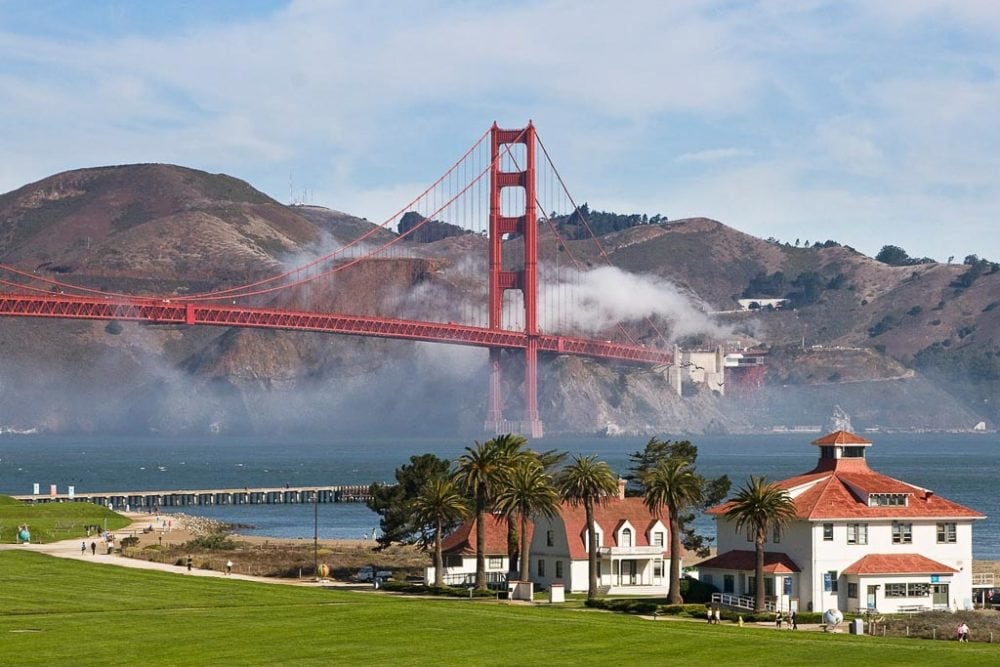
Another American icon, the Golden Gate Bridge in San Francisco also lies within a National Park Service site. The Golden Gate National Recreation Area is nothing short of enormous, protecting more than 80,000 acres of shores, hills, historic sites and natural landscapes in the San Francisco Bay Area.
Not only is this one of the most-visited urban national parks, it’s simply one of the most-visited NPS sites in America in general. Over 15 million people visit it each year. This park is exceptionally diverse, encompassing 19 different ecosystems home to more than 2,000 animal and plant species.
The Golden Gate Bridge is the most famous attraction, but the recreation area also includes Muir Woods National Monument, the Presidio of San Francisco and the infamous Alcatraz Island federal penitentiary. You can see the full overview of places to visit here. There’s a lot of them!
10. Cuyahoga Valley National Park, Cleveland and Akron, Ohio
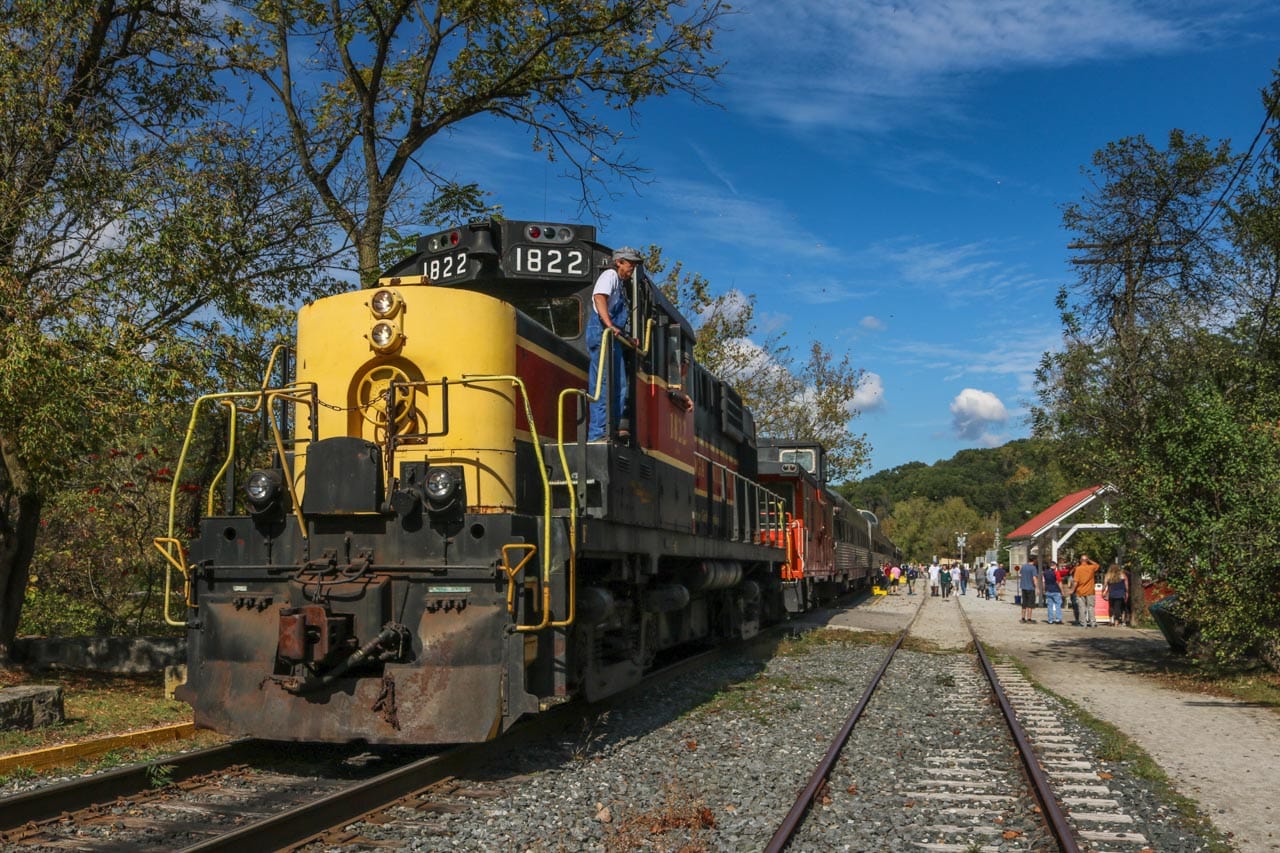
Squeezed between two large cities—Cleveland and Akron—and flanked by interstates and highways, Cuyahoga Valley National Park is an oasis of peace in a very urban region. It’s a refuge for both plants and animals, while people, too, can find solitude there.
The Cuyahoga River winds its way through the park from south to north, paralleled by the historic Towpath Trail and Cuyahoga Valley Scenic Railroad.
You’ll find historic inns, marshlands, rocky areas, deep forests and a couple of gorgeous waterfalls in this underrated national park near major American cities. Additionally, it’s also the only U.S. national park that has a covered bridge.
11. The National Mall and Memorial Parks, Washington, D.C.
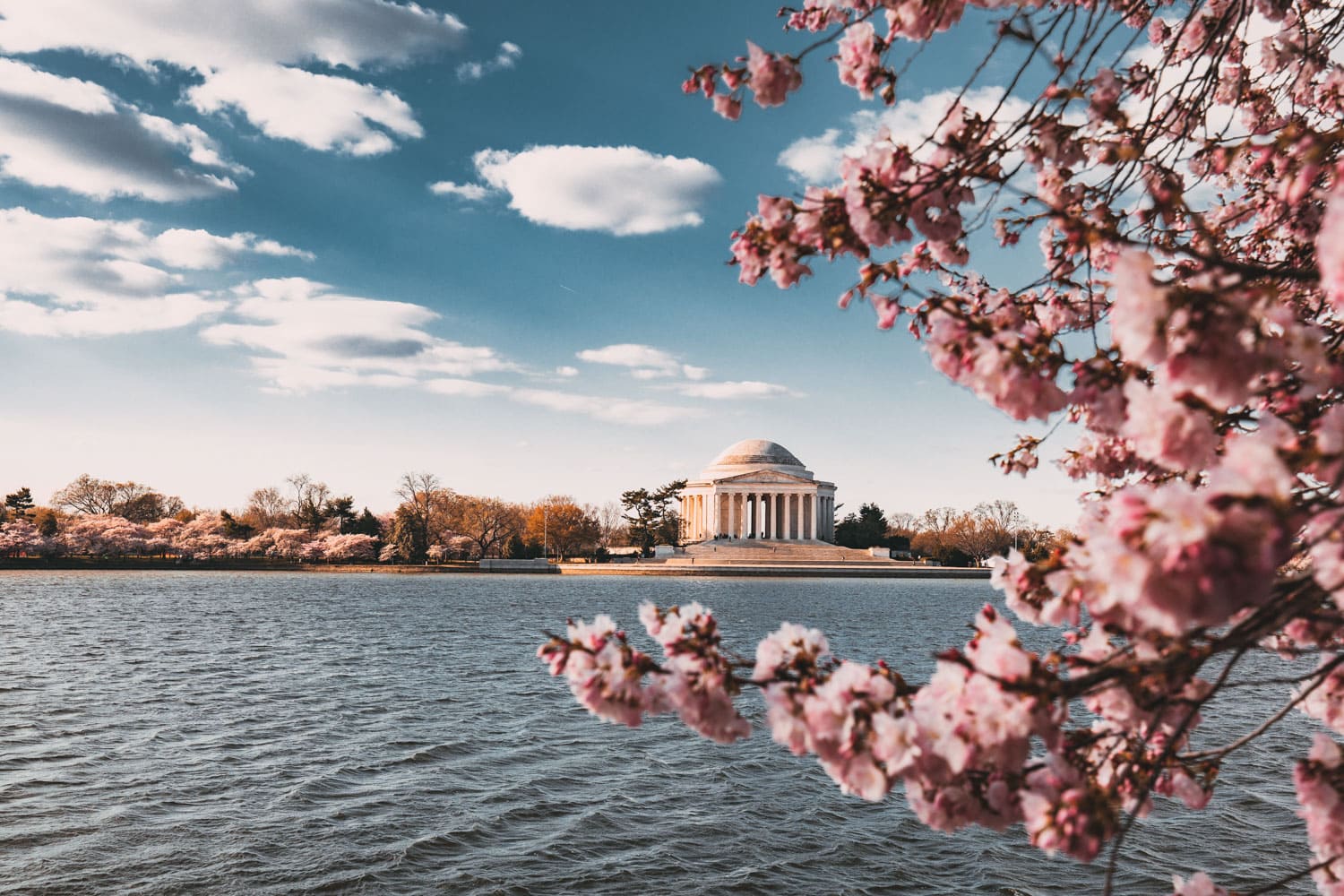
The centerpiece of Washington, D.C., the National Mall and Memorial Parks lie between downtown D.C. and the Potomac River. It’s one of the most visited places in the country, receiving almost 25 million visitors per year.
This long landscaped park contains numerous iconic monuments and memorials, including the towering Washington Monument, the Lincoln Memorial, Vietnam Veterans Memorial and National World War II Memorial.
Other memorials just off of the National Mall are equally as important. Examples are the beautiful Thomas Jefferson Memorial and Martin Luther King, Jr. Memorial.
But there’s even more! At the eastern end of the National Mall stands the massive U.S. Capitol Building, while the White House is across Constitution Ave just to the north.
On top of that, a variety of Smithsonian museums line the park, including such iconic institutions as the National Museum of Natural History, the National Gallery of Art and the epic National Air and Space Museum.
In terms of sheer number of attractions and landmarks, no other urban national parks in America come even close to this one. It’s phenomenal.
12. Indiana Dunes National Park, Michigan City, Indiana
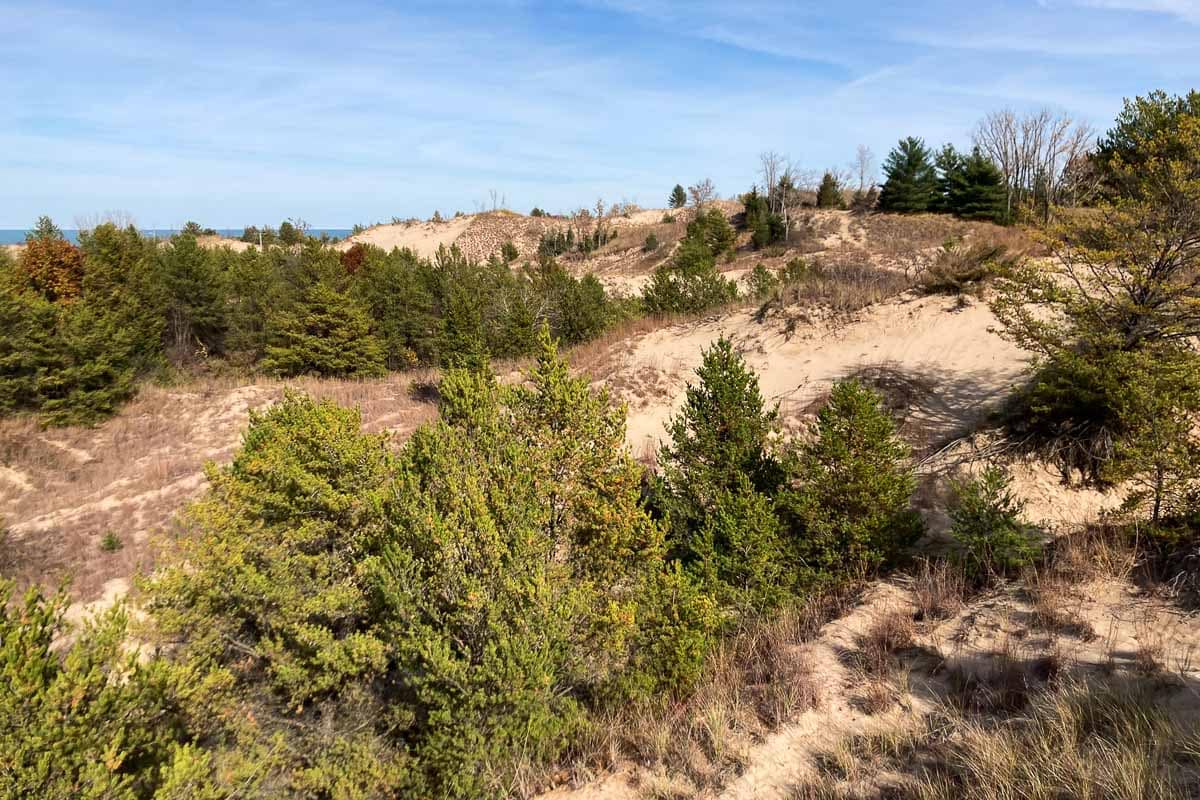
Although it’s technically not within a major city, Indiana Dunes National Park is close enough to Chicago to justify its inclusion in this urban national parks overview. The third most populous city in the U.S. is less than 50 miles away—a one-hour drive.
This is the 61st addition to the collection of national parks in America, previously known as Indiana Dunes National Lakeshore redesignated as a national park in February 2019.
The park protects fifteen miles of shoreline on Lake Michigan. Dozens of miles of hiking trails allow visitors to explore its varied landscapes, including wetlands, prairies, forests, rivers and, of course, endless sand dunes.
13. Boston Harbor Islands National Recreation Area, Boston, Massachusetts
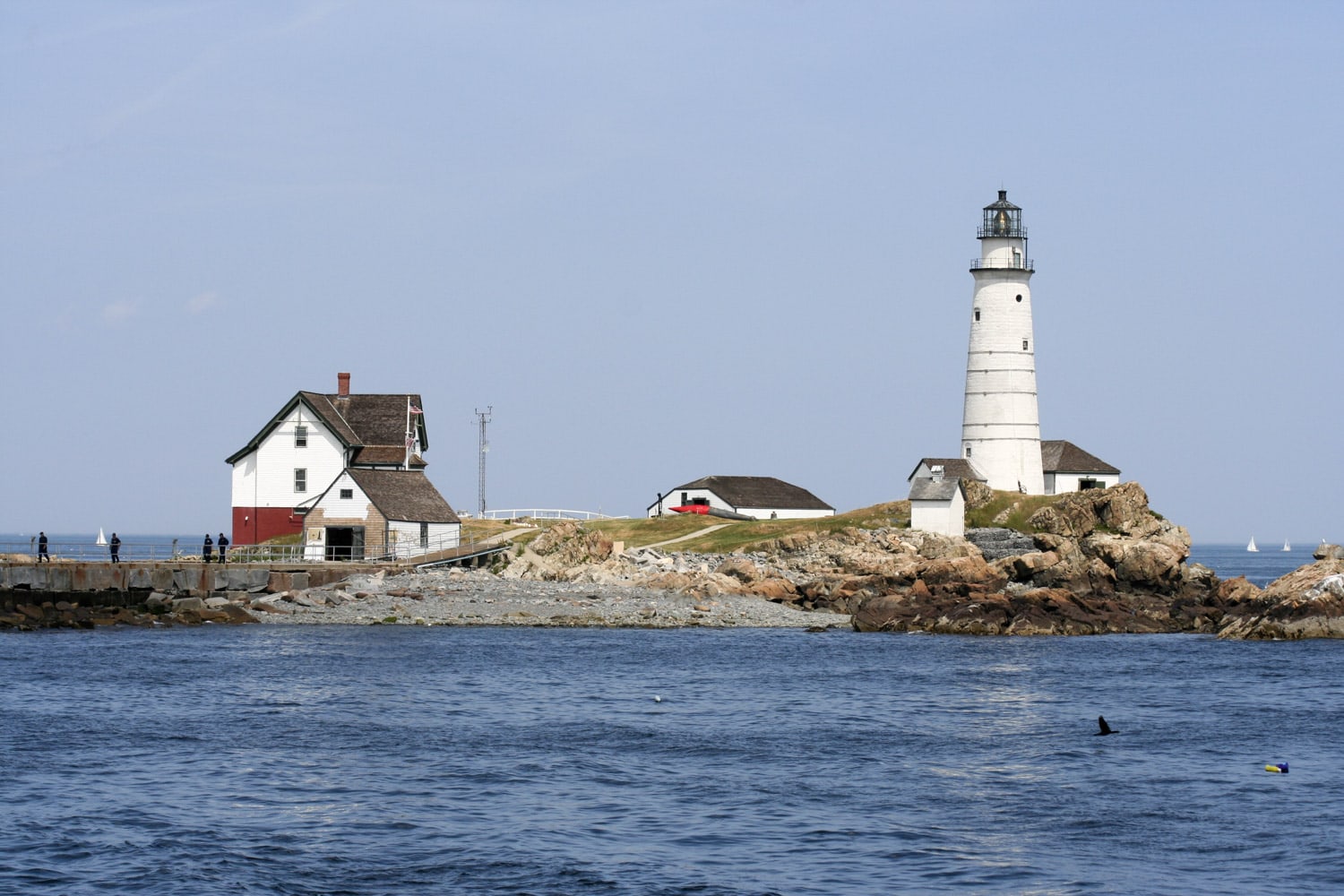
Within sight of the Boston city center, the Boston Harbor Islands National Recreation Area makes for a wonderful escape from New England’s largest metropolis. The park consists of 34 islands and peninsulas a short boat ride from Boston Harbor.
You have a huge variety of activity options. There’s the Boston Light, the oldest lighthouse in the United States, the Civil War-era Fort Warren, excellent camping and hiking, tide pools bustling with marine life, and wonderful swimming (in summer).
14. World War II Valor in the Pacific National Monument, Honolulu, Hawaii
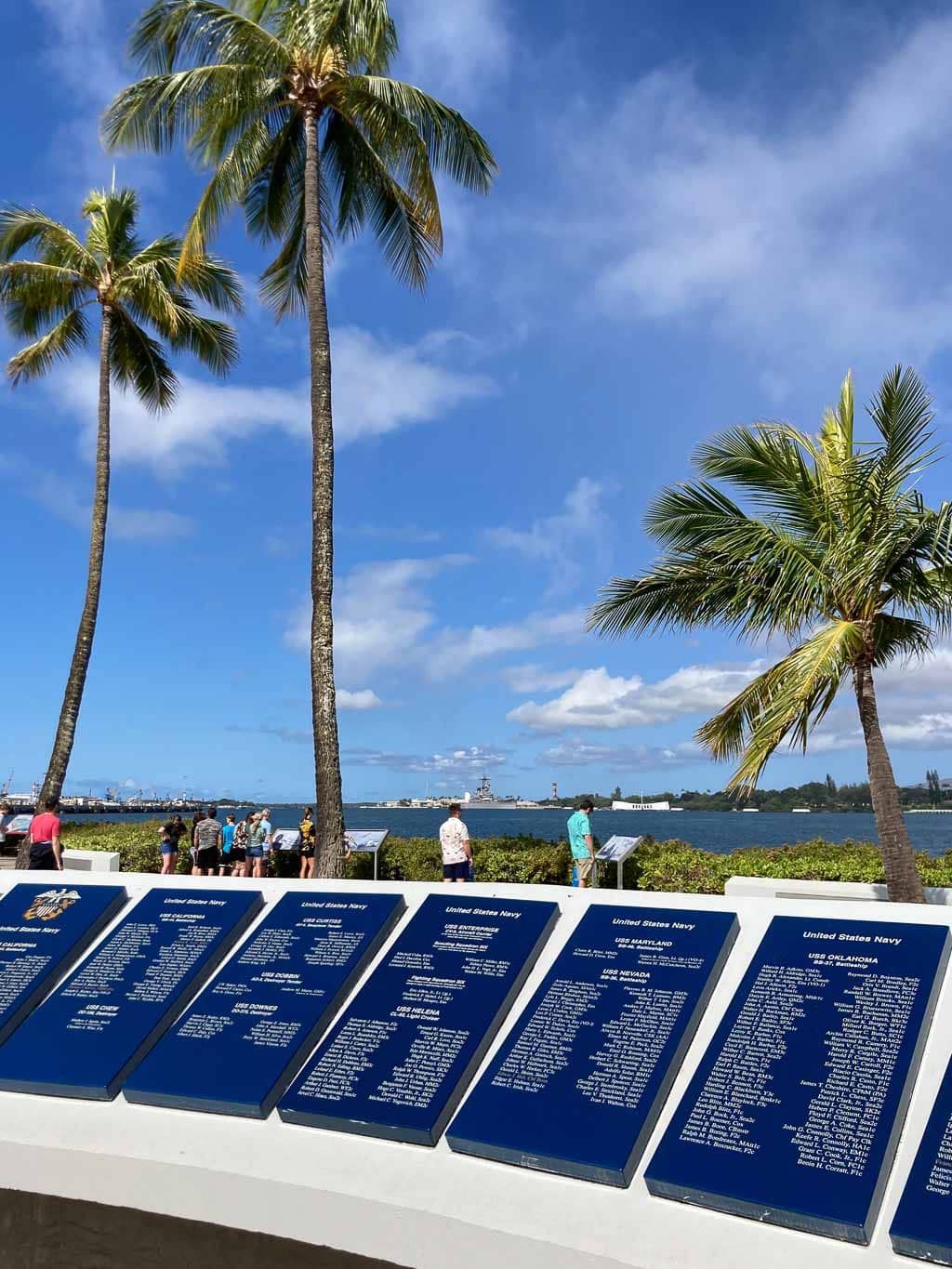
This elaborately named national monument consists of several different sites, but the most famous by far is the USS Arizona Memorial at Pearl Harbor in Honolulu, Oahu, Hawaii.
The sinking of the USS Arizona during the December 7, 1941 attack on Pearl Harbor by the Japanese was a pivotal moment in American and world history unlike many others, bringing the U.S. into the Second World War. The massive significance of that day is hard to overstate.
The World War II Valor in the Pacific National Monument preserves the tales and history of the Pacific War. There are numerous exhibits and galleries displaying everything from photographs to artifacts and personal memorabilia.
The absolute highlight here is the 75-minute USS Arizona Memorial Program, which includes a 23-minute documentary film, a shuttle boat ride operated by the Navy and time in the memorial itself.
15. Hot Springs National Park, Hot Springs, Arkansas
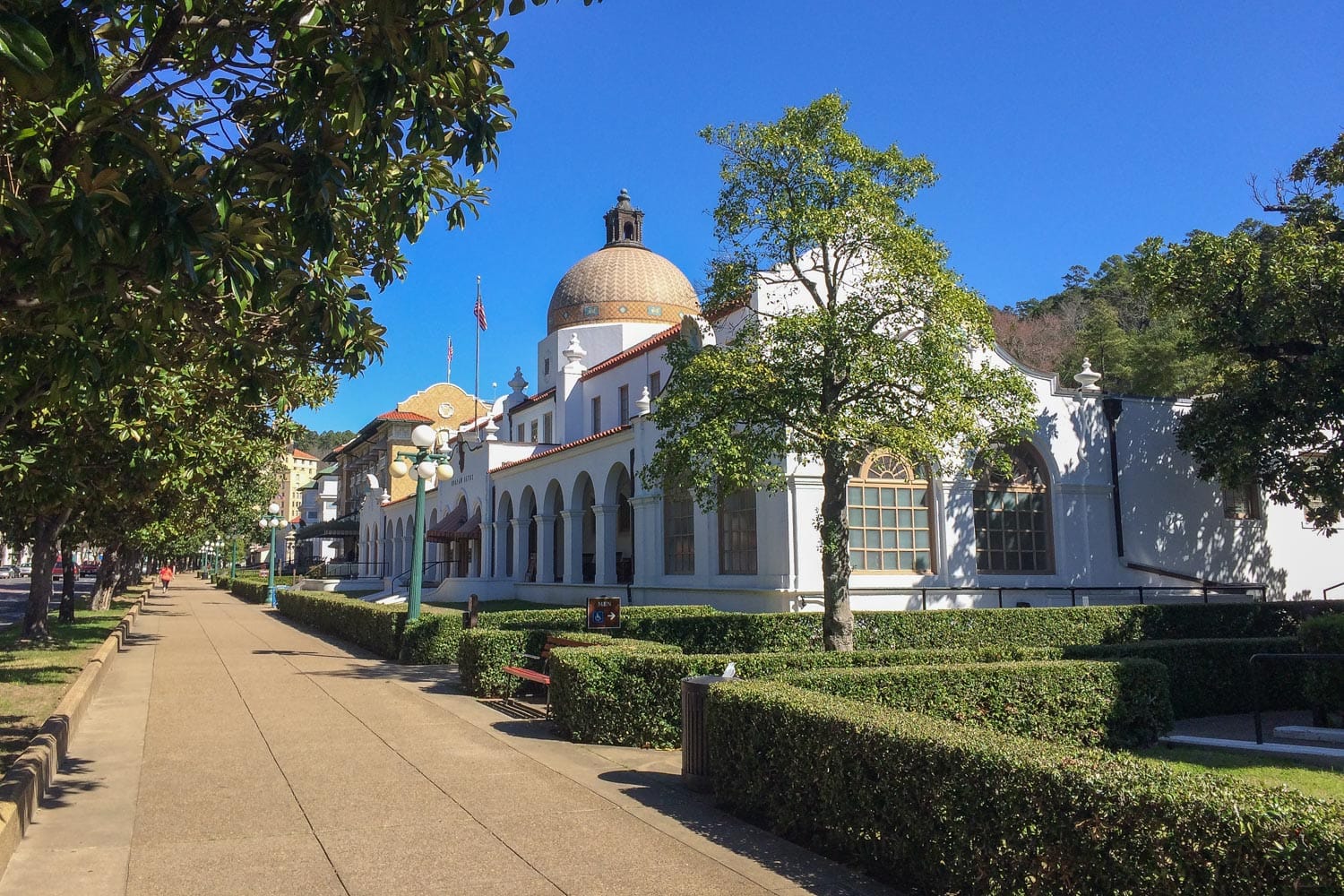
Set aside by the U.S. Congress in 1832, 40 years before Yellowstone became a national park, to preserve it as a recreational area, Hot Springs is the first-ever federally protected land.
It originated as the Hot Springs Reservation, its name changed to Hot Springs National Park in 1921, and is the oldest unit in the extensive National Park Service system. You might even say it is the oldest urban national park in the U.S.
All in all, Hot Springs National Park is tiny. Situated in Hot Springs, Arkansas, a settlement that grew into a charming and popular spa town after federal protection was established, the park’s and town’s history are closely intertwined.
As its name suggests, the park’s main feature and the very reason for its historic popularity are the numerous hot springs.
Known as the “Valley of Vapors” by Native Americans, who had been visiting the area for several thousands of years to bathe in its healing waters, modern development didn’t start until the thermal waters were federally protected in the 19th century.
It’s the only actual national park that includes an urban street lined with historic stone buildings, known as Bathhouse Row. Additionally, it’s also the first, and currently the only, national park with its own brewery.
Are there any other urban national parks that belong in this list? Tell us in the comments below!
Other Best National Parks… Posts
- Best National Parks to Visit in Spring
- Best National Parks to Visit in Summer
- Best National Parks for Waterfalls
- All National Parks with Volcanoes
- Most Photogenic Buildings in National Parks
- International Dark Sky National Parks in America
- Best Scenic Drives in National Parks
- Best Wildflower National Parks
- National Parks for Outdoor Adventures Without the Crowds
- Best USA National Parks for Wildlife Watching
- Best USA National Parks for Bird Watching
- Top USA National Parks for Snowshoeing
- Best USA National Parks for Road Cycling


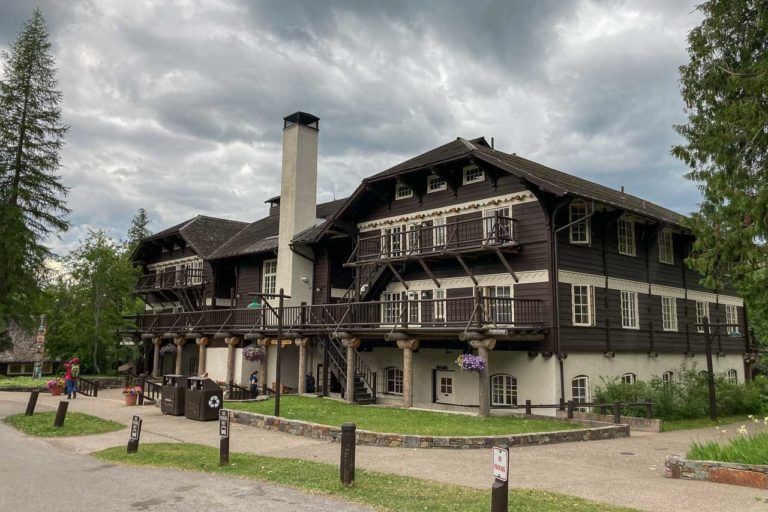


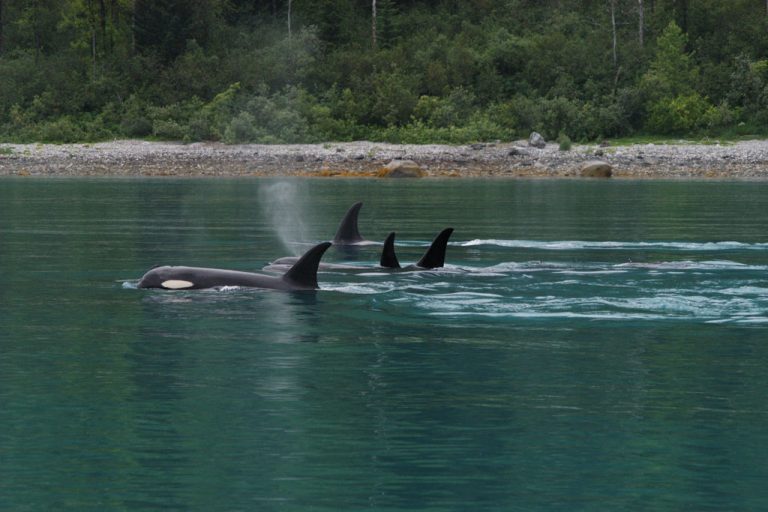

I live in Hot Springs and I would like to know who runs the web searches?
I noticed some outdated material on this site for our National Park.
Like our Gulpha Gorge Camp ground is now a reservation only.
Also we have the Quapaw Bathhouse available for your spa needs. Its a modern bathhouse with 4 different temperature pools.
Massage and spa packages are separately avaiable.
Thank you for bringing that to my attention, Tammy. I’ve updated the relevant information.
Fort Monroe National Monument in Hampton jumps up with its imposing views of maritime activity, bird and ecological diversity, historic namesake fort (the largest stone fort in the US) and history that includes the 1619 landing of the first Africans (whose lineage exists today in area families) into British American colonies, and the place where freedom for African-Americans in bondage began during the Civil War, hence the name “Freedom’s Fortress”.